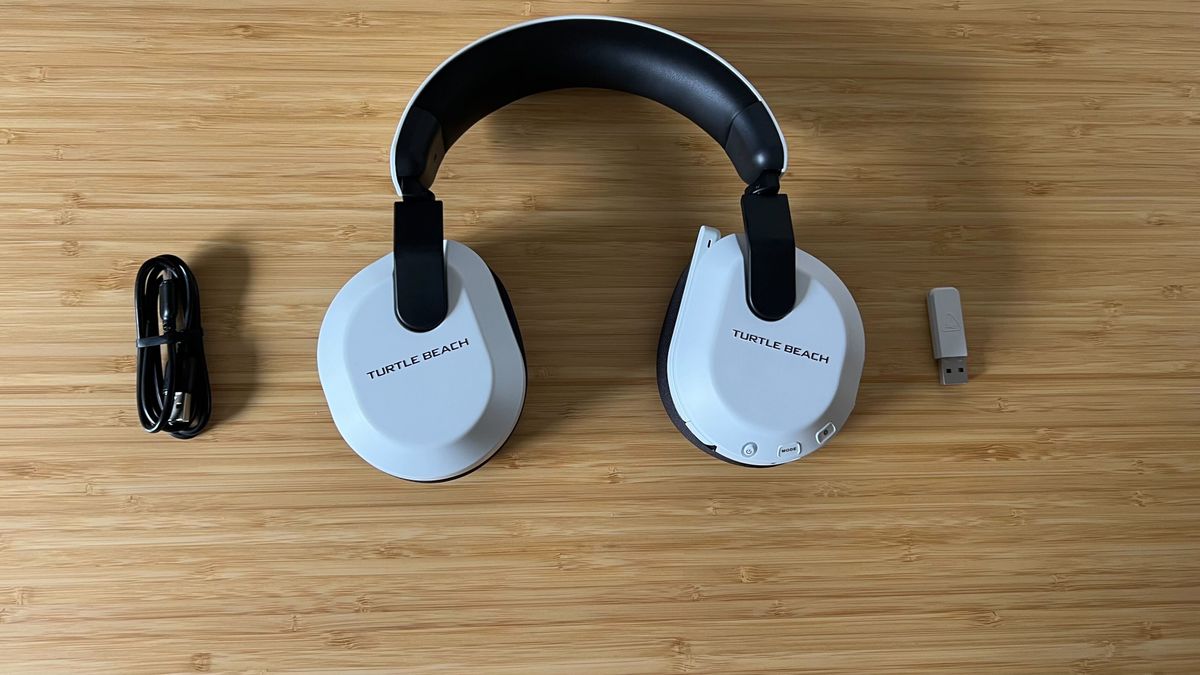12DOVE Verdict
The latest iteration of the Turtle Beach Stealth 600 offers incredible value for money. While it can’t beat others in some specific areas, it owns a jack-of-all-trades design, feature set, and audio performance that makes it a must-see in the sub-$100 category.
Pros
- +
Comfortable ear cushions
- +
Excellent compatibility
- +
Battery life is well ahead of the competition
- +
Plenty of controls
- +
Well-rounded sound
Cons
- -
Little padding in headband
- -
Audio quality suffers at higher volumes
- -
Heavier than the competition
Why you can trust 12DOVE
It’s been less than two years since Turtle Beach refreshed its Stealth 600 headset, and we now have the Gen 3 on the shelves. The latest model doesn’t exactly reinvent the popular series, but it does add some fantastic new features that help the 2024 release stand out in an increasingly competitive lower mid-range arena. This is a range built on everyday value for money, an area the Turtle Beach Stealth 600 Gen 3 absolutely nails.
With an impressive battery boost, Bluetooth connectivity, and a more robust soundstage all added to the final product, the latest generation certainly makes its mark. I spent two weeks using the new model, alongside its main competition (the Razer BlackShark V2 Hyperspeed, SteelSeries Arctis Nova 5X, and the Razer Barracuda X) to see where it sits among the best gaming headsets on the market.
| Price | $99.99 / £99.99 |
| Connection | 2.4GHz / Bluetooth 5.2 |
| Drivers | 50mm Turtle Beach Nanoclear |
| Frequency response | 20Hz - 20kHz |
| Microphone | Uni-directional |
| ANC | No |
| Controls | Power, volume, chat mix, Bluetooth switch, multi-function |
| Battery | Up to 80 hours |
| Weight | 301g |
| Compatibility | Xbox, PlayStation, Nintendo Switch, PC, mobile |
Design
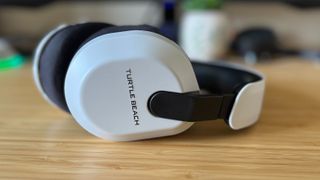
The Turtle Beach Stealth 600 Gen 3 certainly doesn’t look like a cheap headset. The model I received feels distinctly PlayStation in its design (though it’s the Xbox variant that I would recommend to most players) with crisp plastic framing the black internals and headband adjustment. I personally prefer this aesthetic to the alternative mono-black model also available - it just looks and feels far more luxurious overall.
A sturdy metal headband and lighter plastic support the slick visuals. The band itself isn’t nearly as flexible as the SteelSeries Arctis Nova 5X, but still promises a nice degree of durability, especially in its adjustment movement and swivel hinges. Despite its thinner plastic coating, the Stealth 600 Gen 3 weighs more than the last generation (and is the heaviest out of my comparison pool). There’s a larger battery in here than the rest of the competition, though, which goes some way to explaining the additional heft.
That weight doesn’t make itself known during wear, though. A thick foam surrounds each cup, with a nicely cool mesh fabric covering over the top. There’s a pretty heavy clamp force here, but the size of each cup and the generous padding means the ears themselves never feel the brunt of it. Instead, you’re getting the best of both worlds, with a breathable material but an impressive seal for sound isolation.
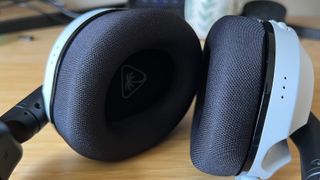
The headband does let the side down. There’s just not enough padding in the top of the band to truly allow the Gen 3 to be a five-hour session headset. The harder feel of the band made itself known from the moment I put the device on, and wore quickly with time. It’s far from my least comfortable experience, but it’s not as pleasant as the Razer Barracuda X or BlackShark V2 Hyperspeed. Both of these headsets offer a thicker cushion around the top.
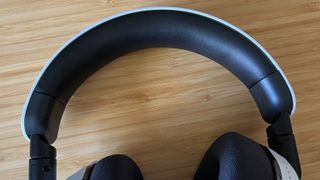
Each cup can swivel a full 180 degrees for laying flat during travel or wearing around the neck. That also means you can get a nicely customized position, to ensure the best seal during play as well. Each side sports a familiar almost-oval form factor, which hugs the ears nicely, with a flat top that doesn’t stick out too far. If you want these headphones to double up for your daily commute or dog walk you’ll have a much better time with this design than the chunkier shape of the Turtle Beach Stealth Pro.
A flip-to-mute mic is also strategically housed inside the left ear cup, perfectly hidden when not in use but easy to whip out when needed. I do prefer this style of inbuilt mic to that of SteelSeries, which opts for a retractable arm that does sometimes feel a little fiddly to find while wearing. Here, a simple flick down is all you need - with an accompanying tone letting you know your microphone is engaged.
Features
The big new features here are Bluetooth 5.2 support and a boosted battery life. The former means the Stealth 600 is now compatible with pretty much anything you can throw at it (providing you pick up the Xbox version). A wireless gaming headset for under $100 / £100 offering that kind of functionality isn’t quite as rare as it used to be - but it’s still a marvel for value.
Simultaneous connection between both 2.4GHz and Bluetooth is still too far out of this two-figure price range, but a handy quick switcher button on the right cup keeps you nimble between your sources. Unlike many cheaper wireless options, this source switching was impressively fast in my testing - hopping between my phone and PlayStation at the snap of a button once everything was configured. Normally, there’s a small lag further down the price bracket. It’s worth noting that there’s no wired mode - so those looking to plug in need to head elsewhere.
A massive 80-hour battery life also keeps things particularly competitive. That’s a particularly high number for this lower mid-range position. $100 gaming headsets usually come with 50 - 70 hour batteries and you’ll find plenty of headsets even further up the price scale struggling to compete with this number. The only other headset I’ve reviewed recently that beats Turtle Beach’s battery was the HyperX Cloud 3 Wireless with an MSRP of $169.99 / £169.99.
That 80-hour figure rang true in my testing as well. I spend pretty much the whole workday listening to music on my headset, with a few hours of gaming every other evening, and around five or six hours of play across a weekend. That translates to between 55 and 60 hours of use on a given week, and after my testing week, I still had about 30% charge left.
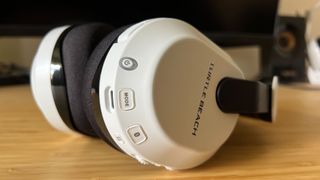
The Stealth 600 Gen 3 punches well above its price tag in the battery department, but also impresses in its onboard controls. They’re a little clustered which means there’s a steep learning curve to getting every tap and adjustment right the first time, but the sheer number of clickers at your fingertips is certainly impressive here. I would have preferred to have the chat mix and volume dials separated to avoid accidental scrolls, for example, but having both present isn’t something I can say for many headsets under $100.
If you don’t want to use the chat mix dial (and you won’t be able to on PlayStation anyway), it can be reprogrammed in the headset’s software for other functions. You’ve got a small Bluetooth switcher button, a separate option for pairing, a power button, and a multi-function ‘Mode’ button all on the left cup as well. This last clicker can be used for a range of different customizable functions, from swapping presets to controlling media playback, but primarily toggles Turtle Beach’s SuperHuman Hearing feature.
SuperHuman Hearing is Turtle Beach’s ‘competition’ mode. It’s a sound profile that highlights footsteps and gunshots while de-emphasizing everything else in the soundstage. It’s awful. I’ve never enjoyed the over-processed, unnatural audio that results from this mode - and the Stealth 600 can keep casual players aware of their surroundings well by itself. This is an added feature and doesn’t detract from the overall experience, but I would be wary about basing your purchase on it alone.
The Stealth 600 Gen 3 is one of the rare headsets that uses software from both a desktop-based client and a mobile app. That means you’re covered for both PC and console play, though the full Windows program is far more sophisticated. You’ll be running Swarm II (thanks to the brand’s recent acquisition of Roccat) to customize your sound profile across 10 EQ bands, but the mobile app can also keep your battery information handy, navigate your presets, and adjust chat-mix. That’s a good degree of functionality, especially with those additional programmable buttons in the mix.
Performance
The Turtle Beach Stealth 600 Gen 3 uses its 50mm drivers to the best of its ability. This is a rich, robust sound profile with particular care directed towards the lower ranges but a surprising amount of detail in the trebles as well. Everything sounds very warm here, which makes for excellent cut-scene audio - particularly in more emotive situations like The Last of Us Part 2. However, that powerful bass also brings explosive battlefields to the fore. Doom Eternal benefitted the most from this wide soundscape in my testing, with dynamic gunplay represented fantastically through bouncy, energetic audio and plenty of grit in those metal moments.
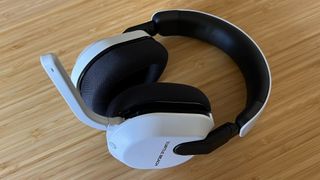
The overall result isn’t going to match up to higher-end headsets - I did experience distortion in the middle and lower ranges when volumes were bumped up (more noticeably on console than PC), and there’s less detail in these often more complex areas than you’ll find in something like the SteelSeries Arctis Nova Pro or Astro A50 X. The Razer BlackShark V2 Hyperspeed is better at handling these more muddled soundstages (it uses the same high-end drivers as the Pro model), with the Stealth 600 Gen 3 losing far more of the action when things got heated. You’re also not spending nearly the same amount of cash here as you would with SteelSeries or Astro’s top-of-the-range devices - and, for the money, I was impressed with the audio pumping out of these cups.
Everything sounded far more textured than the Razer Barracuda X, and with a bolder bassline than the SteelSeries Arctis Nova 5X (on a neutral setting). This is a well-balanced sound profile straight out of the box, with enough tonal energy to keep things lively while still providing a nice level of detail for quieter environment-heavy moments.
Directional audio is more than passable for everyday play as well. Ultra-competitive players will be looking for something with a little more precision in its stage, but everyday players will be more than happy to plug in with these cups. I was able to easily identify footprints and gunshots in my CS2 runs. The microphone isn’t going to hold up to the holy grail that is the Razer BlackShark - but it does its job. You’re not getting the warmth or natural clarity that you’ll find in more high-end models, but my comms were all loud, clear, and strong enough for my teammates.
Should you buy the Turtle Beach Stealth 600 Gen 3?
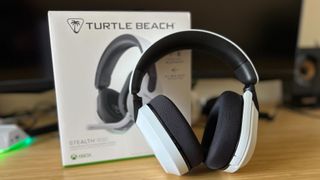
The Turtle Beach Stealth 600 Gen 3 is a jack of all trades, and that’s exactly what it needs to be to compete right now. Excellent functionality pairs beautifully with a rich soundstage and is topped off with an impressive battery life and a slick design to boot. There’s not much you can argue with there - especially considering that $99.99 / £99.99 price tag. I’d recommend this headset to anyone working with a split PC and console setup and plays casually.
That’s not to say the Stealth 600 Wireless Gen 3 is going to replace the Razer BlackShark V2 Hyperspeed as the best headset for the majority of players. The BlackShark offers up a more sophisticated sound profile while also boosting your mic quality - all for just $30 / £30 more. The design doesn’t lend itself to everyday wear quite as well, and Xbox players need not apply - so there’s plenty of wiggle room in that assertion, depending on your situation.
The SteelSeries Arctis Nova 5X is also just $30 / £30 more than the Stealth 600 Gen 3. It features the same 2.4GHz / Bluetooth connection system (with a newer Bluetooth 5.3 version) and adds pre-engineered presets for a massive number of games straight from the mobile app. The Stealth 600 does offer a more well-rounded audio profile straight out of the box and through larger 50mm drivers. If you want sound tailored to your game, I’d opt for SteelSeries. If you’re more PC-focused (or don’t want to tinker with EQ at all), Turtle Beach wins in this matchup.
Then there’s the $99.99 / £99.99 Razer Barracuda X. This model sits at the bottom of the price range these days (often on sale for $69.99 / £69.99), but does so with older 40mm Razer TriForce drivers and smaller 50-hour battery life. It’s more comfortable than the Stealth 600 and can run in an unpowered wired mode, which means it retains its position as the best Nintendo Switch headset available, but I’d take the newer Turtle Beach model for all other platforms.
| Specs | Turtle Beach Stealth 600 Gen 3 | SteelSeries Arctis Nova 5X | Razer Barracuda X | Razer BlackShark V2 Hyperspeed |
|---|---|---|---|---|
| Price | $99.99 / £99.99 | $129.99 / £129.99 | $99.99 / £99.99 | $129.99 / £129.99 |
| Connection | 2.4GHz / Bluetooth 5.2 | 2.4GHz / Bluetooth 5.3 | 2.4GHz / Bluetooth 5.2 / Wired | 2.4GHz / Bluetooth 5.2 / Wired (USB-C) |
| Drivers | 50mm Turtle Beach Nanoclear | 40mm Neodymium | 40mm Razer TriForce | 50mm Razer TriForce Titanium |
| Frequency response | 20Hz - 20kHz | 20Hz - 22kHz | 20Hz - 20kHz | 12Hz - 28kHz |
| Microphone | Uni-directional | Bidirectional | Uni-directional HyperClear Cardioid | Razer HyperClear Super Wideband Unidirectional |
| ANC | No | No | No | No |
| Controls | Power, volume, chat mix, Bluetooth switch, multi-function | Power, volume, Bluetooth switch, mic mute, chat mix | Power, volume, Bluetooth switch, mic mute | Power, volume, playback, Bluetooth switch, mic mute |
| Battery | Up to 80 hours | Up to 60 hours | Up to 50 hours | Up to 70 hours |
| Weight | 301g | 277g | 250g | 280g |
| Compatibility | Xbox, PlayStation, Nintendo Switch, PC, mobile | Xbox, PlayStation, Nintendo Switch, PC, mobile | Xbox, PlayStation, Nintendo Switch, PC, mobile | PlayStation, PC, Nintendo Switch, mobile |
How we tested the Turtle Beach Stealth 600 Gen 3
I used the Turtle Beach Stealth 600 Gen 3 for all daily music, streaming, and play over the course of two weeks. I also tested directly against the SteelSeries Arctis Nova 5x, Razer Barracuda X, and Razer BlackShark V2 Hyperspeed in that time. I primarily played Doom Eternal (PS5), The Last of Us Part 2 (PS5), Fallout 4 (PC), and CS2 (PC) for review purposes, while also playing A Little to the Left and Gears Tactics on PC. For more information on how we test gaming headsets, check out the full 12DOVE Hardware Policy.
We’re also rounding up the best PS5 headsets and the best Xbox Series X headsets. Or, if you’re looking for something more desktop-based, check out the best PC headsets on the market.

Managing Editor of Hardware at 12DOVE, I originally landed in hardware at our sister site TechRadar before moving over to GamesRadar. In between, I've written for Tom’s Guide, Wireframe, The Indie Game Website and That Video Game Blog, covering everything from the PS5 launch to the Apple Pencil. Now, i'm focused on Nintendo Switch, gaming laptops (and the keyboards, headsets and mice that come with them), PS5, and trying to find the perfect projector.

A new Batman #1 from Matt Fraction and Jorge Jiménez launches this September with a "revamped aesthetic," a throwback costume, and a new Batmobile

Marvel reveals its full slate of May 2025 comics and covers featuring the Avengers, the X-Men, Spider-Man, and more

Former Witcher 3 lead says his new vampire RPG Blood of Dawnwalker has a smaller open world because "it feels more like you actually know the place" compared to "behemoths"
Most Popular




